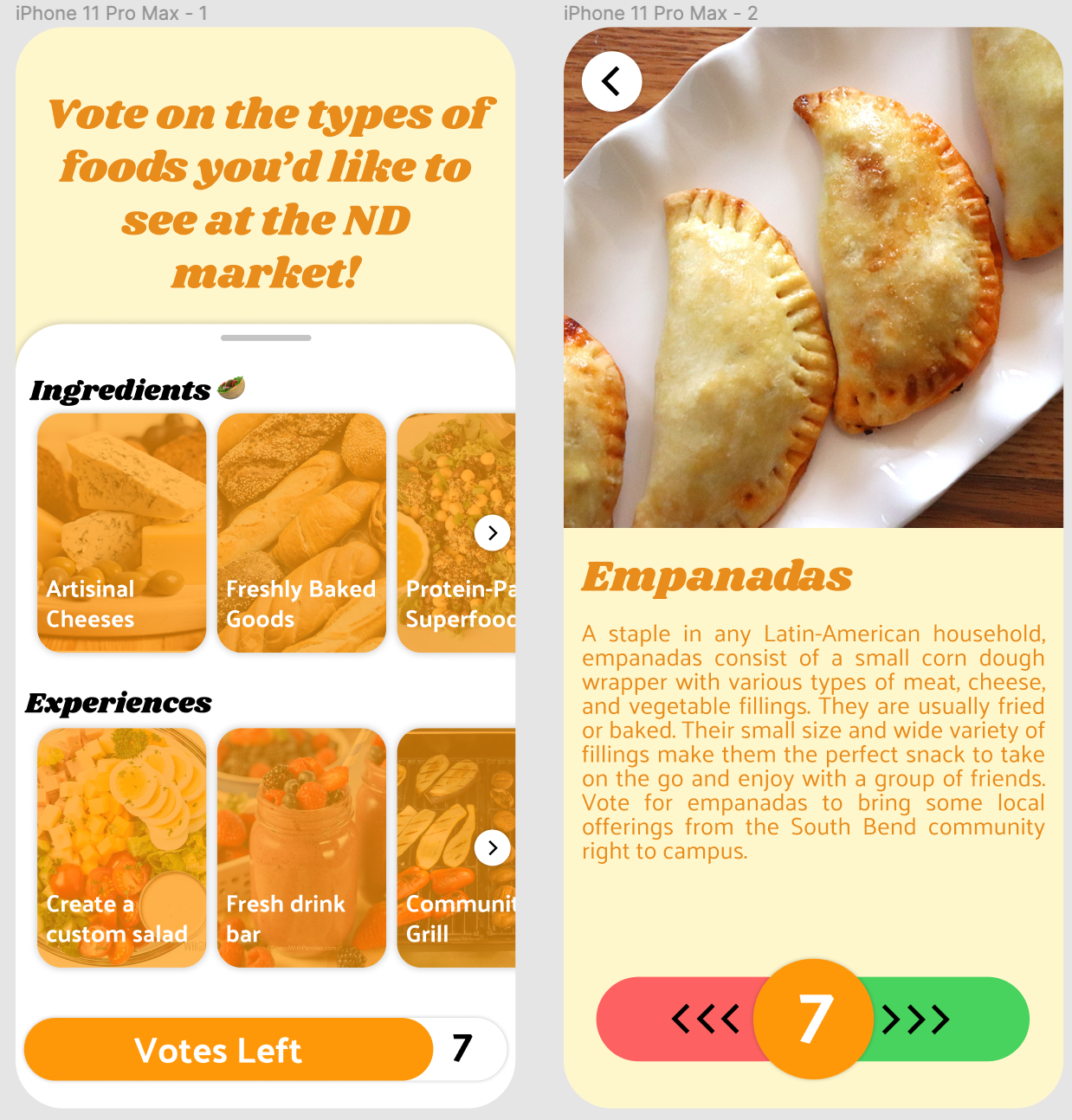Design Matters Coursework
A case study on improving snacking on Notre Dame's campus
Problem
This project was done for a non-technical design class I took during my undergraduate studies named "Design Matters." It was a hands-on introduction to the concept of Human Centered Design, and specifically tasked with equipping students with the knowledge to develop products that meaningfully solve problems for a consumer. The course was open to people of any major, and is structured as the first course for a design minor offered at my university. I had a unique background in this course being one of only a few students from the engineering department, which gave me a unique skillset to apply in this area.
The task was to engage in the design process, including discovery, brainstorming, feedback, and development, to improve the experience of "snacking" on the campus of my university. As part of this project, we were to interview a sample of students who were not in the course about their snacking experience and learn about what experiences they liked and disliked in order to develop a product that meaningfully improved the experience. Throughout this experience we were constantly in the process of brainstorming ideas, prototyping them, and then collecting feedback from possible users in order to improve on the prototype. Finally, we were to present our findings and demonstrate our final idea for a product that would address the given problem. This was not unlike the typical experience of "Agile" development in the software engineering space.
Approach
Part of the research process included interviews, where we conducted both one-on-one interviews, as well as what are called "Ethnographic" interviews, which are done with people in the places where they are already engaging with that activity. Overe the course of our research, we discovered that many of the primary issues with "snacking" on our college campus revolved around both the diversity of the snacks available on campus as well as simply the availability of those snacks. This case study was conducted during the second semester after the pandemic began, and notably many of the ways students were able to snack was disrupted by measures to enforce social distancing. Many students desired more healthy options and were often seeking "freshness" from their food. They posited that it would be easier to maintain healthier eating habits if it was simply easier to obtain fresh foods on campus, and if that experience itself was enjoyable.
Solution
For this project, we went through one round of ideation, collected feedback on four of our ideas, then selected a final idea based on our feedback that would best solve the problem space.
Our final idea was to utilize the various outdoor tents that were set up outside dining halls at the time and reinvent them to resemble a cross between a farmer's market and a buffet. Students would walk through a line collecting fresh ingredients, then exit the tent where those ingredients could be grilled, turned into a salad, or blended together as a smoothie. This solution would not only give students a way to access fresh ingredients on campus, but also to transform those ingredients into a snack, and make the experience fun as well.
Being a software developer, I also contributed some work on an app-based food voting concept, allowing students to upvote ideas for the farmer's market and be able to adjust the variety of foods to suit their needs. Though writing code was outside of the scope of this project, I was able to produce some prototype wireframes in Figma in order to showcase the concept of voting for different foods.
